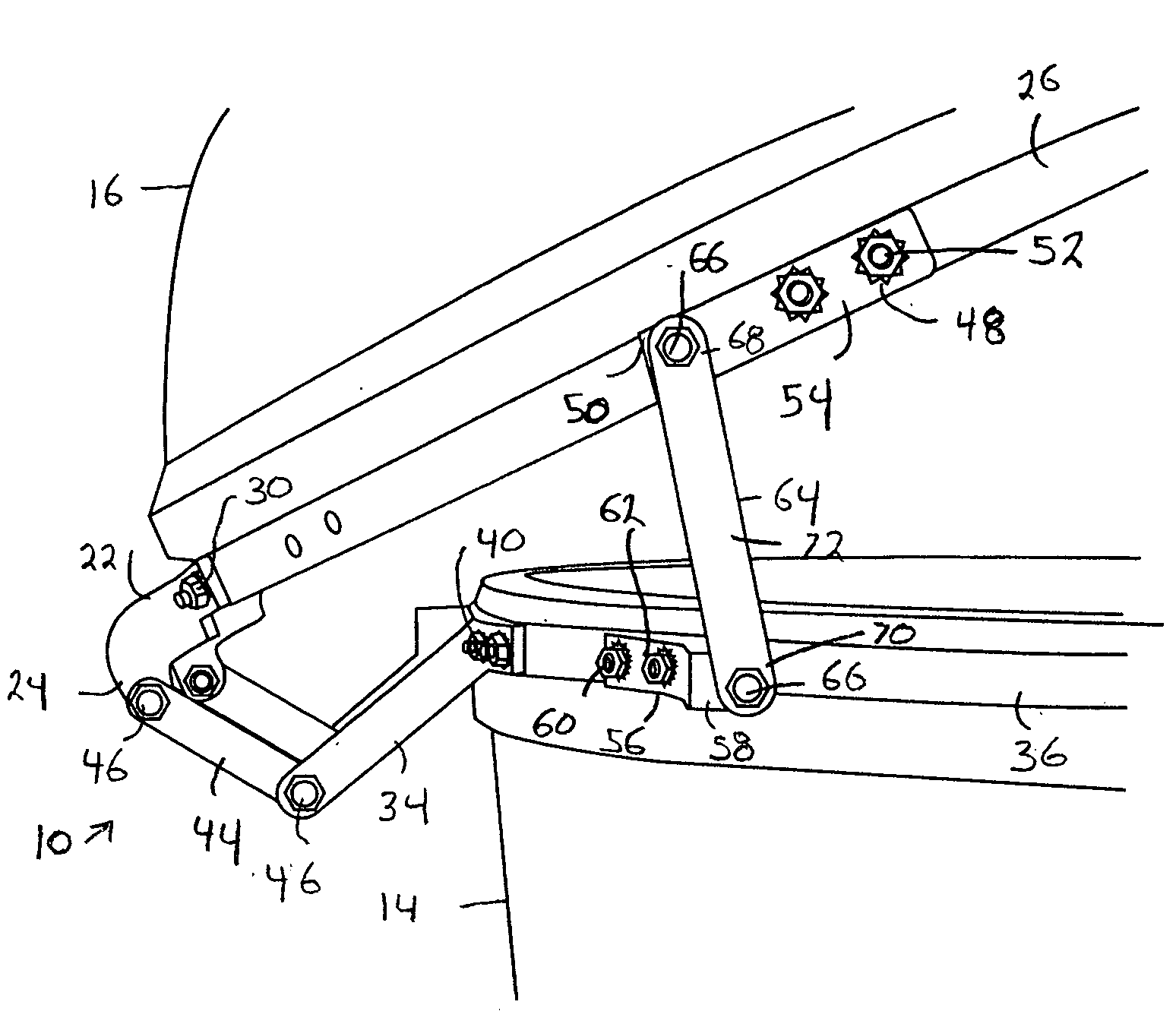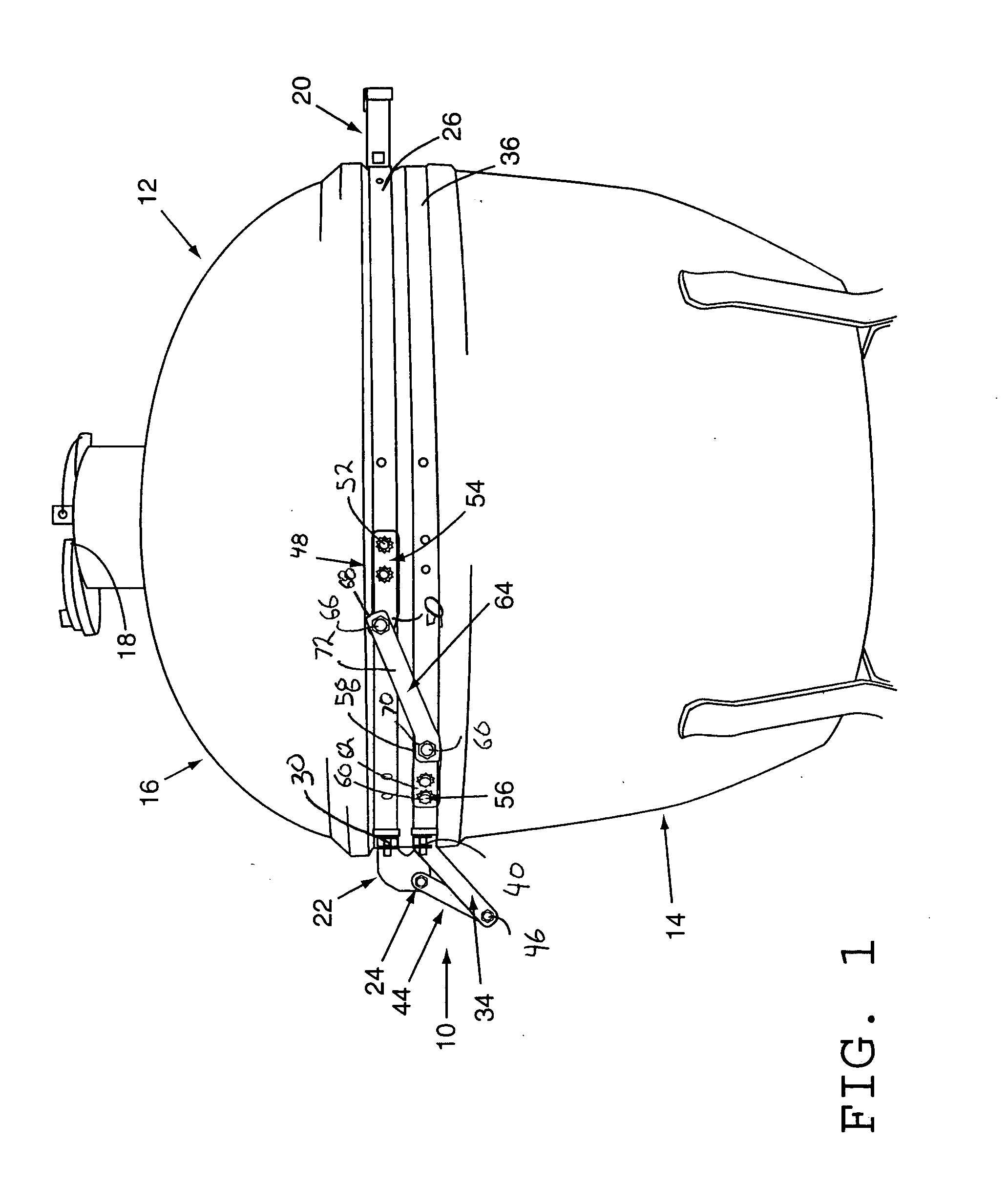Hinge mechanism for barbeque grills and smokers
a grill and smoker technology, applied in the field of hinge mechanism of grills and smokers, can solve the problems of inconvenient and unsanitary methods of removing a lid from a grill or smoker tub or attaching a lid to the tub, and is even more inconvenient and ineffective when applied in context, and achieves the effect of reducing the lifting effect, not compromising the seal, and adequate adjustability for the placement of the lid
- Summary
- Abstract
- Description
- Claims
- Application Information
AI Technical Summary
Benefits of technology
Problems solved by technology
Method used
Image
Examples
Embodiment Construction
[0028]The structure and operation of a first preferred embodiment of a hinge mechanism10 in accordance with the present invention will now be described in detail with reference to use thereof with a ceramic grill 12 as shown in FIGS. 1 and 2. It should be understood, however, that the present invention is not limited to such an application and may be used in combination with any barbeque grill or smoker or similar device made of any common material, including metal grills and smokers of any shape or size. It should be understood that the generic term “grill” as used herein, including in the attached claims, and unless otherwise specified, refers to barbeque grills and smokers and similar devices of any shape or size and made of any appropriate material.
[0029]As illustrated, the ceramic grill 12 includes a base tub portion 14 and a lid 16. In this case, both the tub portion 14 and the lid 16 are made of a relatively thick ceramic material, and thus the lid 16 is quite heavy. The base...
PUM
 Login to View More
Login to View More Abstract
Description
Claims
Application Information
 Login to View More
Login to View More - R&D
- Intellectual Property
- Life Sciences
- Materials
- Tech Scout
- Unparalleled Data Quality
- Higher Quality Content
- 60% Fewer Hallucinations
Browse by: Latest US Patents, China's latest patents, Technical Efficacy Thesaurus, Application Domain, Technology Topic, Popular Technical Reports.
© 2025 PatSnap. All rights reserved.Legal|Privacy policy|Modern Slavery Act Transparency Statement|Sitemap|About US| Contact US: help@patsnap.com



